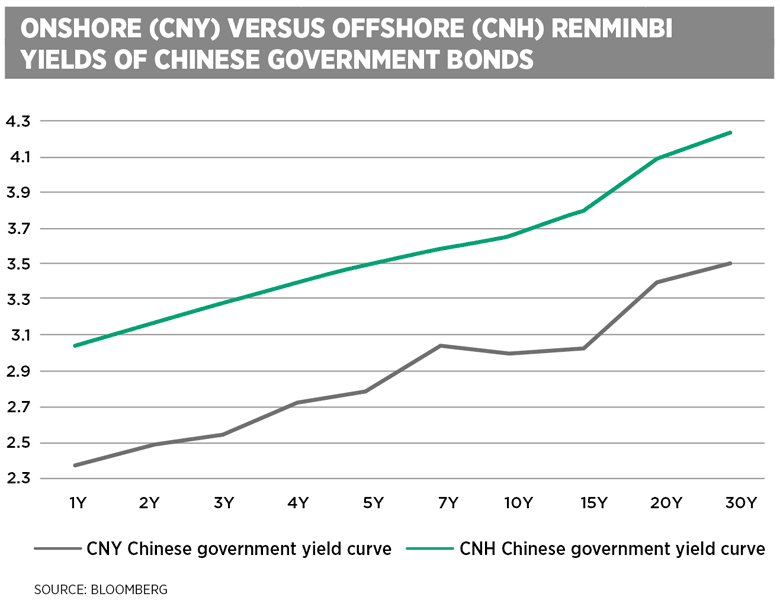
If the Panda bond market is to return to growth, it will need encouragement.
Here we look at five areas where regulators, providers and other market players could help Panda bonds more attractive and familiar to the international investment community.
We desperately need improvement in Chinese regulations and transparency of the Panda bond issuance procedure. Unlike UK, Hong Kong or US laws, governing most international bonds, Chinese regulations (ie bankruptcy law) remain untested and/or unknown to foreign issuers and investors.
Investors will need to be able to price the bonds, based not only on the ability to service debt, but also on the willingness to do so. The latter requires knowledge of the Chinese law and regulations governing Panda bonds.
Chinese regulators are moving up a steep learning curve on Panda bonds, but many investors have seen the People’s Bank of China (PBOC) as reactive, rather than proactive, when it comes to regulating new products. No matter whether the sentiment is right or wrong, Chinese regulators need to move fast to clarify the official rules in order for the Panda bond market to grow at all.
While we believe that PBOC will take its time announcing the new rules, we expect the rules to favour Panda bond development. We just hope the ruling will not come too late now that US dollar bond issuances are picking up.
The PBOC cut rates to stimulate China’s slowing economy. In our view, investors’ expectation of further rate cuts generates mark-to-market (MTM) gain expectation for Panda bond investors with renminbi as a natural currency. In addition, the declining yield environment in China will lower the funding cost and refinancing risk for Panda bond issuers.
On the other hand, stronger-than-expected economic growth in China may stop the rate cuts and stunt the growth of the Panda bond market. Also, a more gradual-than-expected rate hike in the US or a more aggressive-than-expected rate cut in Europe could cause competition for offshore liquidity that would, otherwise, be aimed at Panda bonds.
It is important to note that the PBOC’s rate cuts alone may not necessarily make it cheaper to issue Panda bonds. First, issuers have to find it attractive to issue Panda bonds (versus bonds denominated in other currencies). Second, investors may have a better alternative to Panda bonds in which to invest.
The former will depend on the speed of a rate hike in the US versus that of rate cuts in the eurozone and China. The latter will depend on whether investors can still expect attractive MTM gains on Panda bonds or whether they think US dollar or euro bonds will offer them better returns.
For example, should the US Federal Reserve (the Fed) raise rates more gradually than expected, US dollar bonds will perform unexpectedly well relative to Panda bonds, and foreign investors could decrease their bond portfolio weight dedicated to Panda bonds.
Likewise, should the European Central Bank lower rates more aggressively than expected, European issuers may find it cheaper to issue euro bonds rather than Panda bonds.
The PBOC’s rate cuts will boost liquidity for Panda bonds, but onshore liquidity could also stem from a capital-control mechanism and/or a return of investors’ confidence in the renminbi’s value against the US dollar. China’s slowing economic growth and declining investor confidence in renminbi’s value against the US dollar have hampered offshore renminbi liquidity.
Overall, we expect the majority of Panda bond demand to come from existing onshore liquidity, not offshore liquidity.
First, there is onshore liquidity that cannot be easily deployed outside China.
Second, Panda bonds will offer onshore investors no currency risk and more capital gain opportunities on the easing cycle in China.
PBOC has raised onshore liquidity through different tools, such as reserve requirement ratio (RRR) cuts, rate cuts and the PBOC’s reverse repurchase agreement activities. China’s M2 money supply rose 12.8% year-over-year in April (below a median estimate of a Bloomberg economist survey of 13.5%).
The central bank lowered its RRR for major Chinese banks four times in 2015 to the current 17.5% (China’s RRR was 20% from May 2012 to February 2015). Falling inflation in China enabled PBOC to cut rates to boost the Chinese economy.
A 40-base point one-year benchmark lending rate cut in November 2014 was the first of its kind since July 2012. The central bank cut one-year benchmark lending and deposit rates five times in 2015 to the current 4.35% and 1.5%, respectively.
The spread between the mentioned lending and deposit rates has been 285 base points since November 2014 (down from 300 base points). We would not be surprised to see this spread tightening even further.

Despite recent improvements in Chinese economic data, we expect the PBOC to continue cutting RRR and interest rates to boost spending and investments onshore. The rate and RRR cuts will increase money supply and, therefore, demand for Panda bonds as well as interbank assets, all of which will further lower onshore yields, in our view.
Chinese regulators need to move fast to clarify the official rules in order for the Panda bond market to grow
In addition to returns, we believe the following characteristics will increase demand for Panda bonds.
First, Panda bonds, issued by familiar international issuers, will save investors extra credit work.
In our view, this familiarity with issuers will lead to Panda bonds becoming even more liquid than CNY bonds (issued by onshore Chinese issuers). Better knowledge of issuers will allow investors to better differentiate credit quality, translating into spread differentials between strong versus weak credits, in our opinion.
Chinese regulators need to move fast to clarify the official rules in order for the Panda bond market to grow
The development of the renminbi bond market depends on knowledgeable and well-informed investors who can price bonds efficiently. Panda bonds could eventually attract more international investors, which will make available more research and opinions.
Second, we believe Panda bond development will introduce more international issuers to China. These issuers will bring with them a more transparent practice, which, we believe, will motivate Chinese issuers to follow suit. More savvy investors will encourage Chinese issuers to meet international disclosure standards.
In our view, improving disclosures in China is crucial for the country’s transition to a more international financial hub. In other words, a lack of transparency will also stall the development of Panda bonds.
Investors will need to be able to differentiate credit quality among Panda bonds whether it is through credit ratings, in-house credit teams, asset managers and/or sell-side research houses.
The PBOC requires that all Panda bonds be rated by Chinese credit rating agencies (although the central bank has approved some exemptions). For Panda bonds, issued by unknown issuers, a proper credit rating is crucial for an efficient allocation of capital. The market opinion is that Chinese credit ratings do not provide sufficient credit-quality differentiation.
A domestic rating of AAA accounts for an issuer’s systemic importance to the Chinese economy, which leads to government support, in our judgement. The domestic ratings are also derived from rankings among Chinese peers, not international peers. The abundance of domestic AAA ratings has made it difficult for investors to price Panda bonds without doing their own credit homework.
Arguably, many Panda bonds rated AAA by Chinese credit rating agencies will have very different international ratings. That said, we believe a Panda bond rating should be accompanied by an international issuer rating.
A lack of a proper international rating scale attached to the Panda bond rating could lead to investors’ inability to assess credit risk properly and that could lead to credit losses and/or insufficient capital cushions. In other words, issuers may not necessarily get to borrow at a funding cost that reflects their credit risk.
We admit that it is a challenge for Chinese credit rating agencies to adjust their rating scales, but bond investors need the ability to convert a Panda bond rating into an international scale in order to compare among international peers.
Warut Promboon is chief rating officer at Dagong Global Credit Rating Ltd in Hong Kong
